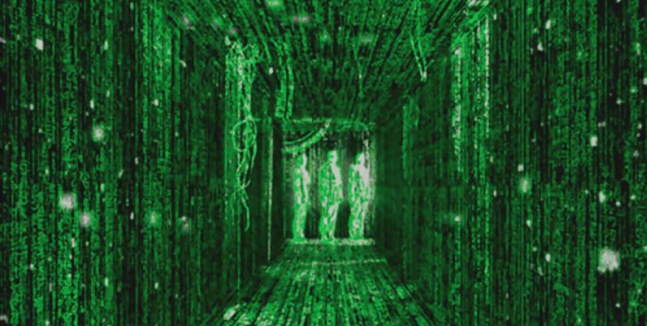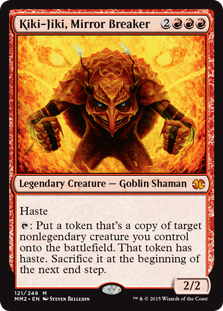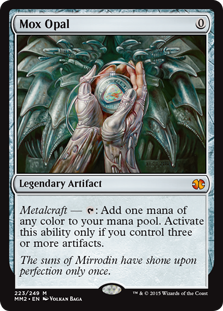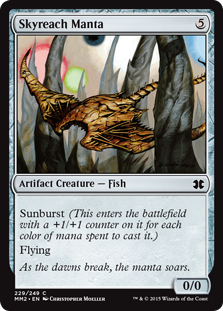Problem #1: The Plot Is Too Derivative
Writing for sequels is always tough, as to be truly successful you must build upon the original’s foundations without simply rehashing the same story. If you deviate too far from what attracted people to the first film, viewers feel disconnected. As an example, The Matrix is a beloved sci-fi action movie that engrossed people with great special effects, suspenseful action sequences, and substantive philosophical questions to grapple with. Yet most of the world likes to pretend that its two sequels don’t exist.
By contrast, if you retell the same story in a slightly different vehicle you risk having a final product that can’t stand on its own merits, and it comes across feeling phoned in. Consider just about any comedy, action, or horror movie sequel in the history of. . .ever.
Modern Masters 2015 regrettably falls more into this latter camp than the former, which is surprising. Like its previous incarnation, this set is chock full of mechanics far in excess of a normal set. Whereas a typical set revolves around 4 mechanics on average, Modern Masters 2015 has seventeen – that’s two more than the first one. More interestingly, the more you dig into the set, the more evident it becomes that the designers put substantial effort into cycling the mechanics. Indeed, of all of the mechanics in MM2, only five overlap from the first time around: Affinity, Changeling, Domain, Kickers, and Sunburst.
On the plus side, this nearly full mechanics swap provides a whole new arena to explore a seemingly diverse range of strategies. As one would expect, just like its progenitor, this set isn’t friendly to new players, and simply going through the drafting portion of the event served as a reminder of that. With well over a dozen different mechanics to work around, there were a lot of potential areas to explore, and it was fun to see specific cards floating around again. It certainly takes some time to flesh out how to proceed, as the set definitely challenges you to make difficult decisions as the packs are passed around.
However, much like a sequel not quite living up to its older sibling, MM2 stops short of repeating the same level of drafting success, namely because it takes a slight step backwards in complexity and variety. This coincides with the influx of the previously absent Zendikar and Scars blocks and many of the mechanics they brought with them. The consensus among our draft group was that these block inclusions added more hegemony to the pool of options. Of its 17 mechanics, five revolve around adding or manipulating counters in some way, while four have an artifact-centric approach. This says nothing of the fact that six of Modern Masters’ 15 mythics center around artifacts or colorless creatures – most of them catering to the popularity of the mana-intensive ‘Tron’ decks in Modern that rely on Karn and the Eldrazi to function.
That’s a large chunk of creative space at mythic level devoted to a single “color”, and that focus point became evident that it propagated throughout the set the further along we got. None of our drafting pod were novice players; everyone was fully capable of exploring the depth of what the set theoretically offers. As our deck choices solidified though, two approaches were clearly more dominant than the rest, focusing either on artifact/colorless cards or token manipulation.
Gee, what are the odds?
When the decks were completed and the matches started, these were our eight deck focuses:
- A Blue / Red control deck revolving around Metalcraft and flyers
- A monoblack deck around wither and creature removal
- A Green / Red aggressive deck, focusing on cheap creatures and backed up with some Graft mechanics and Goblin War Paints
- A Black / Green Eldrazi deck, revolving around mana ramp and token generating until Emrakul, the Aeons Torn came online.
- A monowhite artifact deck involving Rusted Relics, Lodestone Myrs, and buffing that also contained all five basic land types for a solid Sunburst subtheme.
- A Blue / White artifact control deck focusing on Affinity and Equipment
- A different Blue / White artifact control deck based around Tezzeret the Seeker, flyers and Ethercaste Knights
- A Blue / White / Black utility deck leveraging a host of different abilities while they pecked at the enemy.
That’s four out of eight decks in the pod that ultimately took up some kind of artifact motif. While this could be a potential outlier among the set writ large, feedback from other drafts indicates it actually seems to be more the rule than the exception. That revelation was disappointing, and the consensus afterwards was that original Modern Masters had a better cross-section of deck styles. For instance, in exchange for upping the emphasis on colorless cards, Modern Masters 2015 dropped from five tribal deck options to two, and it largely eliminated any graveyard-centric or more unconventional styles seen previously (such as Storm or Suspend). Given that drafting the set is one of its central tenants, this reduction in complexity and choice came off as a step in the wrong direction.
The other thing that was noteworthy – to us at least – was that there was also distinctly less nostalgia in this set. Since Zendikar and Scars were absent the first time around, there was a concentrated effort for them to be heavily represented here. This is understandable to a point, lending to the set’s underlying purpose of getting reprints onto the market. Yet these blocks are more recent than the rest, being released in 2010 and 2011 respectively, and didn’t come out all that long ago when compared to those from the older end of the Modern pool. To adjust for these newcomers, the percentages of cards from the oldest sets was reduced, removing some of that inherent charm of playing with decade old cards made new again.
So, how did these decks do? Feel free to click below to look at quick breakdown if you’re curious, or you may continue on to our summary of the draft itself.
Round One:
W Artifacts vs B/G Eldrazi & tokens: Both games were close, with Emrakul making an appearance once. However, White’s artifact armies held off early onslaughts as their flyers managed to eek out wins both times. 2-0 Artifacts
U/W Tezzy vs B Wither: Both games started on the ground but were settled in the air. Black couldn’t keep up with the level of blockers and control. 2-0 Tezzy
G/R Aggro vs B/U/W Utility: The Swiss Army Knife deck couldn’t keep up with the onslaught of small, fast creatures benefiting from auras and Graft. 2-0 Aggro
U/W Artifact Control vs U/R Artifact Control: In both games, after a hefty back and forth of counters and bounces, the White player finally pushed through for the win. 2-1 U/W
Round Two:
W Artifacts vs U/W Tezzy : Both games were tight, with the second going down to rounds. The first ended due to a lack of flying defense showing up, whereas the second was won by the Tezzy player not blocking a flying Ulamog’s Crusher and gambling they wouldn’t cast another flyer afterwards. But they did. 2-0 Artifacts
B/G Eldrazi & tokens vs B/U/W Utility: BUW was the guttural sound that was made as the Eldrazi’s player’s token creature vanguard overwhelmed the other player’s board both times. 2-0 Eldrazi
G/R Aggro vs U/W Artifact Control: After each player traded getting slaughtered quickly, the final game was a test of creature aggro against a Blue / White defense. The defense held out in the end. 2-1 Control
U/W Artifact control vs B Wither: After succumbing to mana screw the first game, the second game had Black’s creature removal and early Wither offense going strong before petering out too early. 2-0 Control
Round Three:
G/R Aggro vs U/R Artifact control: The Gruul-like hordes struck fast and often enough in 2/3 games, which was enough to move on. 2-1 Aggro
W Artifacts vs U/W Artifact Control: Two White-based artifact decks using equipment, flyers, and metalcraft. Both were tenacious and relentless in pressing their artifacts onto the battlefield. In the end, only one could survive. Which only one did. 2-1 White Artifacts
U/W Tezzy vs B/G Eldrazi & tokens: The token onslaught came on early both games, but thanks to Tezzeret summoning necessary blockers and both games seeing a countered Pelakka Wurm as the turning point, the Eldrazi were stopped in their tracks. 2-0 Tezzy
B/U/W Utility vs B Wither: Too little, too late for the Utility player, as their deck finally kicked into high gear, stifling the Black player’s every move and handily earning the round. 2-0 Utility
The winner of the overall draft was…an artifact deck!
Honestly, who didn’t see that coming?
In the end, it was the mono White deck who took first place. With their extra lands used to Sunburst up Skyreach Mantra (a surprise factor in winning multiple games), they secured the victory. Still, it was hard to avoid the fact that three of the top four spots in our draft went to artifact-based decks, lending to that lack of variety feeling. What’s more striking is that half the players ran the same style – and fairly successfully – showcasing the fact that the set has a high enough degree of those cards to accommodate the ability of 50% of the draft to use variations of the same theme.
[/spoiler]
At the end, that the players had a near-unanimous opinion on the diversity of the set was telling: Modern Masters 2015 had a difficult time achieving the same level of critical drafting success as the previous set. There was a lot of representation of cards throughout the now eight year span, but they weren’t evenly distributed by any means. In some ways, MM2 felt like the emphasis leaned too heavily on being a drafting vehicle to reprint a handful of expensive Zendikar and Scars cards than it was about making a drafting set that could be at least as good, if not better, than its previous attempt.
To our non-tournament crew, that took some of the fun out of it. Our appreciation of the draft portion of Modern Masters 2015 is solely from the guise of casual and Commander players with a penchant for drafting. Given that none of us are Constructed players, our focus remained predominantly on the playability and cohesion of this being a draft-worthy set. Even within that more limited critical lens, this set of reprints left many of us wanting more.
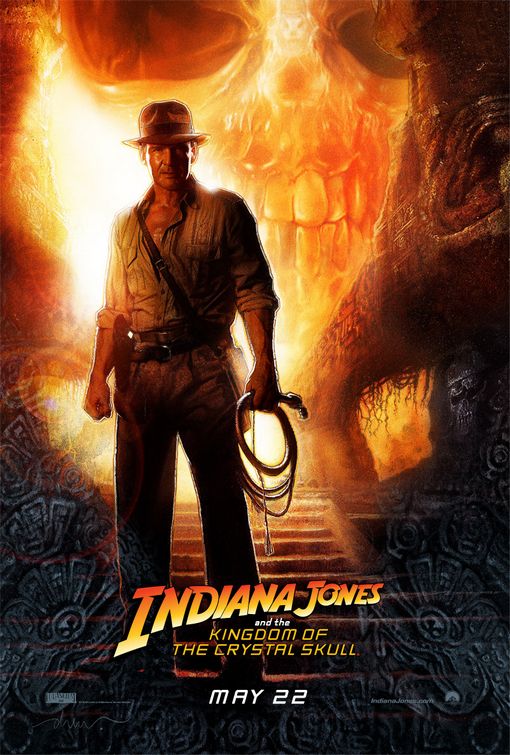
The draft was like Indy 4: you generally like what it’s doing but there’s a lot of room for improvement.
Modern Masters 2015 still succeeds as a draftable set, just as the last one did, giving players a unique mix of reprinted cards of various combinations worth trying. That being said, it also never climbed to that same level of drafting excitement as it had previously. Regardless of whether it was because it had too high of a concentration of newer block cards, or it simply didn’t reach the same level of anticipation the second time around, there was nevertheless a notable enthusiasm gap.
Modern Masters 2015 is certainly worth draft consideration on merit alone, but in many ways its play style felt closer to drafting a slightly more advanced expansion than a highly complex anthology set. The result is that distinctive ‘good but not great’ feeling that most sequels have.
Draft capability is just one part of the set, though. General cost and the distribution of individual cards themselves are a whole different story.
Next: Casting Issues

